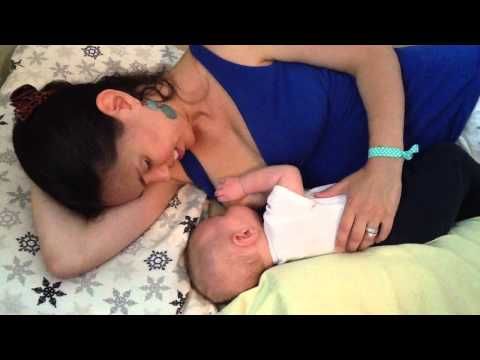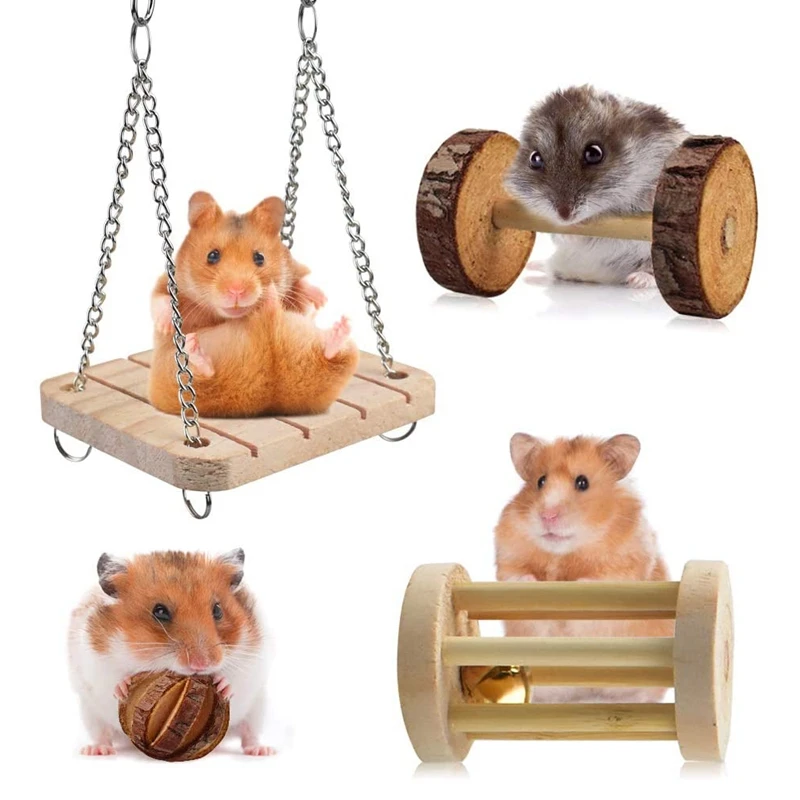Baby squeaks when feeding
Laryngomalacia - The Squeaky Baby
by Dr. Christopher Chang, last modified on 4/13/21.
Read and comment below!
Babies make all sorts of unusual cute sounds, but one sound that is not cute is a squeaky or some other type of noisy sound that occurs with breathing, specifically with inhalation. This sound called stridor is due to a "floppy" airway known as laryngomalacia. This alarming sound typically occurs only with inhalation and more prominently when crying, feeding, or some other type of exertion. Depending on severity, it may also occur at rest or even while sleeping. Typically, most parents describe an intermittent "noisy" breathing (lower pitched and guttural) when at rest that turns into more of a high-pitched squeak with exertion.
Other related symptoms which may or may not be present include:
• Turning blue
• Reflux leading to a "wet" sound in the throat region (phlegmy, mucus throat)
• Skin retractions immediately above and/or below the sternum that occurs in time with stridor (suprasternal or subxiphoid)
• Difficulty feeding and poor weight gain
• Choking while feeding
These symptoms may be present at birth, but typically becomes more obvious around 3 weeks of age, mainly because newborns within the first 1-2 weeks of life are not able to breath forcefully enough to create the typical stridor / noisy breathing sounds until they are older.
Thankfully, 90% of infants outgrow this problem by 18-20 months of age.
However, if the laryngomalacia is severe enough, surgical and/or medical intervention will be required.
Diagnosis of Laryngomalacia
Beyond history and exam, a trans-nasal endoscopic exam is required to definitively diagnose this condition. This exam is performed without any sedation in the office. It is performed by threading a thin spaghetti-like noodle through the nose down to where the voicebox is located.
Often, this exam is performed with audio and video recording so that it can be played back in slow motion.
Watch Video of an Infant with Laryngomalacia
What Causes the Noisy Breathing?
Normally, breathing is quiet as there's nothing obstructing air from passing through the nose into the lungs. However, with laryngomalacia, the entry of air through the voicebox is partially obstructed. With the smaller than normal opening, it causes a squeak when air passes through just like a whistle.
The reason why breathing is quiet on exhalation is because air blows open apart the area of partial obstruction. The reason the sound only occurs on inhalation is due to the one-way nature of the obstruction like a door which can only open and close in one direction (inward OR outward into a room, but not both directions).
Take a look at the images below comparing normal, mild, and moderate laryngomalacia. Severe is basically where no airway opening (red dot) can be seen. Each of these images were obtained when the infant was inhaling.
Normal | Mild Laryngomalacia |
Moderate Laryngomalacia | Severe Laryngomalacia |
In the normal picture, air goes between the vocal cords (green dots) into the windpipe (red dot) before ending up in the lungs. The purple dots are the arytenoids (joints that move the vocal cords) and the blue dot is the epiglottis. As you can see, as the severity of the laryngomalacia increases, the airway becomes more obstructed leading to correspondingly increase in noisy breathing and symptoms. In the moderate severity, the mucosa of the arytenoids (purple) are even touching together obstructing the airway to the point one can barely seen the windpipe (red) and vocal cords (green). In the severe case, the epiglottis has folded together like a taco to the point complete obstruction has occurred so one cannot even see the airway, arytenoids, nor the vocal cords.
As you can see, as the severity of the laryngomalacia increases, the airway becomes more obstructed leading to correspondingly increase in noisy breathing and symptoms. In the moderate severity, the mucosa of the arytenoids (purple) are even touching together obstructing the airway to the point one can barely seen the windpipe (red) and vocal cords (green). In the severe case, the epiglottis has folded together like a taco to the point complete obstruction has occurred so one cannot even see the airway, arytenoids, nor the vocal cords.
You can watch a video of an infant with moderately severe laryngomalacia here.
Medical Intervention
With laryngomalacia, the infant has to work harder to pull air into the lungs creating greater than normal negative pressure in the throat region. This negative pressure may get transmitted into the stomach and exacerbate or even cause reflux by pulling stomach contents up into the throat region like someone sucking on a straw (except the straw in this situation is the esophagus).
As such, these affected infants often need to be placed on reflux medications like zantac to avoid throat injury and in severe cases, lung inflammation from soiling due to silent aspiration of reflux juices.
Try to keep infant upright and when sleeping, avoid laying on the back which exacerbates symptoms of laryngomalacia.
90% of the time, infants with laryngomalacia can be managed WITHOUT any need for surgical intervention.
Surgical Intervention
Surgical intervention to treat laryngomalacia is called supraglottoplasty. This procedure is performed only if the symptoms are such that it is adversely affecting the health of the infant to a significant degree. Typically, that entails symptoms of:
• Failure to thrive
• Poor weight gain
• Turning blue with exertion
• Life-threatening apneas
• Significant retractions
• Heart or lung problems stemming from increased exertion from the laryngomalacia
• Need for supplemental oxygen to breath
In particular, turning blue indicates insufficient oxygenation which mandates surgical intervention.
The surgery is performed by trimming away the excess mucosa from the arytenoids and/or epiglottis to enlarge the opening where the obstruction is occurring. Additional cuts between the arytenoids and epiglottis can also be performed to further enlarge the opening.
To prevent airway stenosis due to scarring, the excisions are performed such that they are not adjacent to each other. Take a look at the images below using the moderate and severe laryngomalacia examples from above. Excisions are denoted by the red lines. Green lines denote mucosal division in order to separate the arytenoids away from the epiglottis.
With surgery, symptoms should improve significantly, though typically does not completely resolve (may still have some residual noisy breathing).
Please keep in mind that in our practice, we are not able to offer surgical intervention for laryngomalacia as postop pediatric ICU observation is required (Fauquier Hospital does not have a PICU). We will refer such infants who require surgical intervention to a facility where it can be performed safely.
We will refer such infants who require surgical intervention to a facility where it can be performed safely.
- none
|
|
|
|
Any information provided on this website should not be considered medical advice or a substitute for a consultation with a physician. If you have a medical problem, contact your local physician for diagnosis and treatment. Advertisements present are clearly labelled and in no way support the website or influence the contents. Please note that as an Amazon Associate, we may earn small commissions from qualifying purchases from Amazon.com. Click to learn more.
Please enable JavaScript to view the comments powered by Disqus.
When Should a Parent Be Concerned With a Baby’s Noisy Breathing?
| Wendy Healy
Newborn, Pediatrics.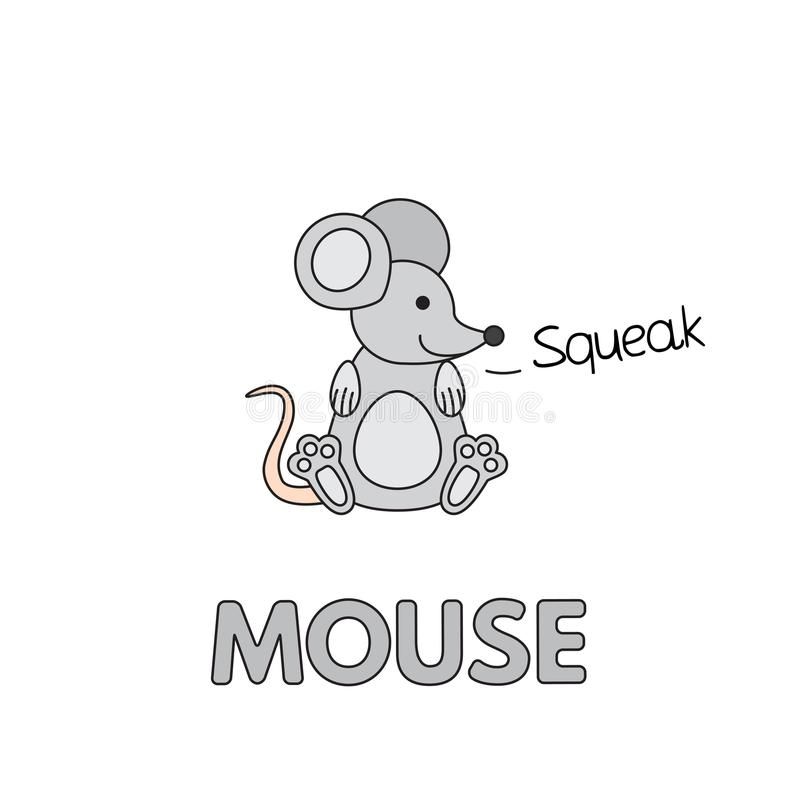
Parents like watching their babies sleep. They find joy in seeing their adorable little ones rest so peacefully. But sometimes babies breathe noisily, making sounds that can cause parents to wonder if something is wrong.
One of the main causes of noisy breathing, or stridor, is called laryngomalacia—a long name for a condition that usually is harmless and resolves on its own. Laryngomalacia is caused by floppy tissue falling over the larynx (voice box) and partially blocking the airway when a child breathes in.
The sound from laryngomalacia is often a high-pitched squeak that often worsens when the baby is agitated, feeding, crying, or sleeping on his or her back. Symptoms usually start within a few weeks or months of birth.
While laryngomalacia is the most common cause of noisy breathing in babies and toddlers, it requires intervention in only a small number of children, according to Jocelyn Kohn, MD, an ear, nose, and throat (ENT) specialist with Stanford Medicine Children’s Health Specialty Services in Walnut Creek.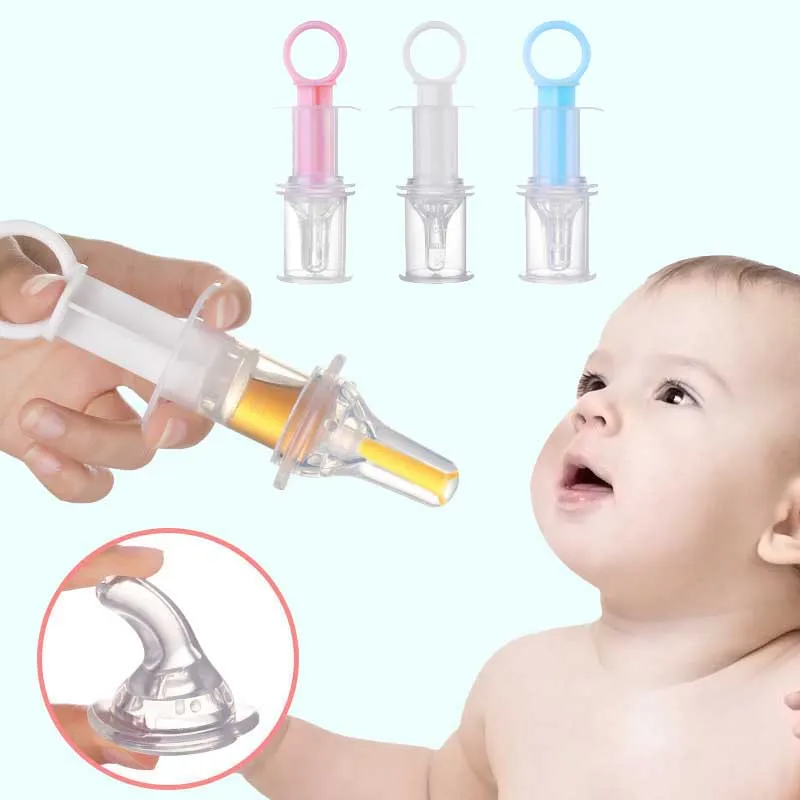 Dr. Kohn also sees patients in the East Bay as part of our partnership with John Muir Health.
Dr. Kohn also sees patients in the East Bay as part of our partnership with John Muir Health.
“This condition is referred to by some as a birth defect, but I prefer to think of it as an immaturity of the voice box that 90% of children grow out of,” said Dr. Kohn.
In most cases, children will outgrow laryngomalacia by the time they’re 2 and the larynx develops, she added. “As children get bigger and stronger, their larynx gets stronger too,” she said. But a small number of cases will require surgery, which is safe and effective.
Parents may notice these symptoms in their child:
- Noisy breathing (stridor)
- Difficulty feeding
- Not gaining weight
- Gastro reflux (spitting, vomiting, and regurgitation)
- Choking while feeding
- Apnea (stopping breathing during sleep)
- An indentation in the neck and chest with each breath
Severity can vary. “Some babies I see have mild cases, just making a squeaking noise, while others can be more severe. Pediatricians always advise parents to ask their doctor about anything that concerns them,” she said. “This is good advice. But in the case of laryngomalacia, it’s usually nothing that requires treatment.”
Pediatricians always advise parents to ask their doctor about anything that concerns them,” she said. “This is good advice. But in the case of laryngomalacia, it’s usually nothing that requires treatment.”
In the worst cases, when babies are not sleeping restfully, have difficulty eating, and aren’t gaining weight, it’s best to talk with the doctor. “These may be signs that an intervention by an otolaryngologist is needed,” Dr. Kohn said.
When children with laryngomalacia fail to gain weight, it’s usually because they’re using so much energy just to breathe that they’re exhausted, she said. Breathing difficulties are often seen as an indentation in a child’s chest and neck, indicating that he or she is having trouble getting enough air.
In these cases, specialists take a closer look by inserting a camera down the throat to see what’s happening in the larynx. “Seeing something ourselves can help reassure parents or guide further treatment,” said Dr. Kohn.
If laryngomalacia is worsened by reflux, Dr. Kohn will treat it with medications. Babies can also be positioned to lessen the breathing problem. Most noisy breathing happens when babies are lying flat on their back, which is the correct position for sleeping. Babies who are awake and being watched can be placed on their stomach to help alleviate the problem.
Kohn will treat it with medications. Babies can also be positioned to lessen the breathing problem. Most noisy breathing happens when babies are lying flat on their back, which is the correct position for sleeping. Babies who are awake and being watched can be placed on their stomach to help alleviate the problem.
“We tell parents to put gravity on their side. Keeping a baby upright when feeding, frequent tummy time, and positioning them on their stomach while awake all help,” advised Dr. Kohn.
Very severe cases, and those that last past two years, may require surgery, which is effective in most children, according to Dr. Kohn. She performs a supraglottoplasty, which adjusts the supraglottis, the tissue above the vocal cords. Although the surgery requires general anesthesia, it’s minimally invasive, using endoscopes and microscopes inserted down the throat. Excess tissue is removed, and tight areas are released.
“Babies usually spend one night in the hospital and recover well, with most experiencing mild discomfort that resolves quickly.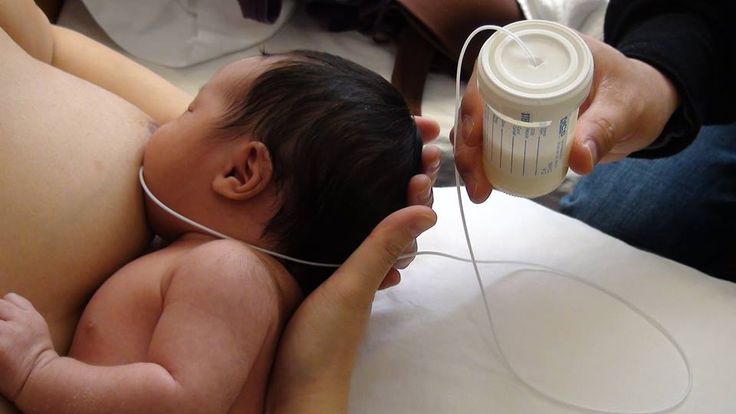 Most babies can start feeding again right after surgery,” Dr. Kohn said.
Most babies can start feeding again right after surgery,” Dr. Kohn said.
There are many reasons for noisy breathing, including cysts, hemangiomas, and inhaled objects, in addition to laryngomalacia. In case of anything with a sudden onset, or if a child put something in his or her mouth and can’t breathe, seek emergency care immediately.
Learn more about laryngomalacia in a HealthTalks podcast from Stanford Medicine Children’s Health.
Authors
Tags: newborn, otolaryngology, pediatrics
Breastfeeding on demand
You can often hear from a nursing mother: "I feed on demand, my baby requires a breast every 3.5 hours." Or: “I have always fed on demand. In a year, we already had 1 feeding in the evening, and my child calmly refused to breastfeed. Before talking about the demand of the child, it is necessary to find out what modern women mean when they say - "I breastfeed."
Modern mothers consider breastfeeding necessary for feeding their baby.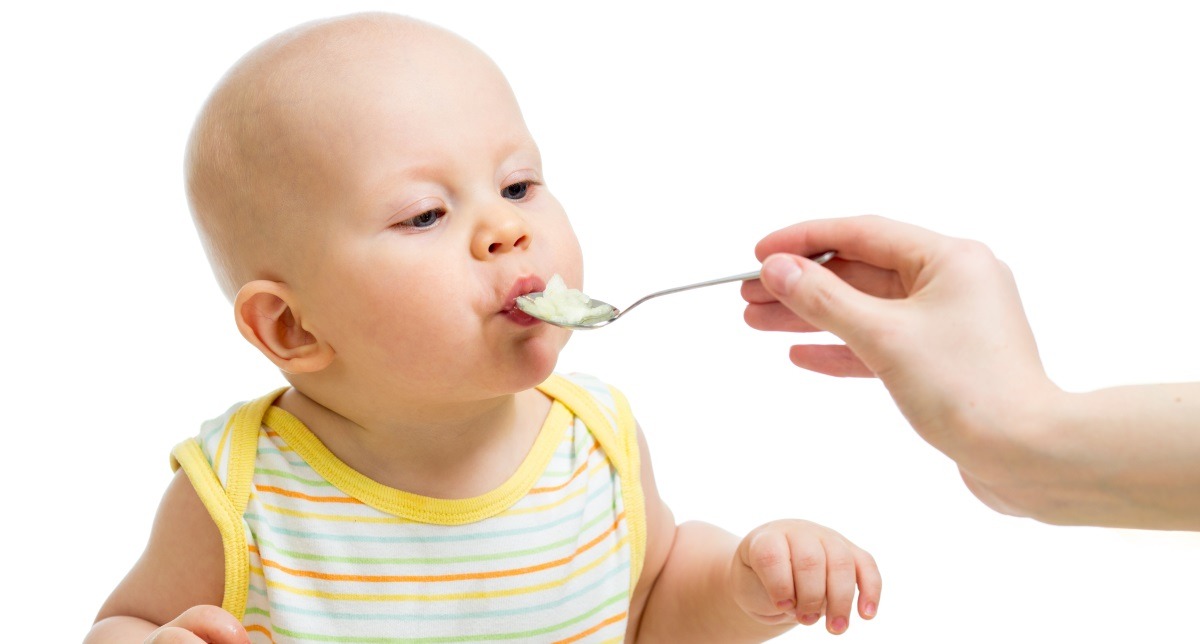 Just for feeding. Breast milk is food, the mother supplies the baby with the nutrients necessary for growth and development. When a baby suckles at the breast, he eats. Breastfeeding makes sense only as a process of supplying proteins, fats, carbohydrates, vitamins and microelements. nine0004
Just for feeding. Breast milk is food, the mother supplies the baby with the nutrients necessary for growth and development. When a baby suckles at the breast, he eats. Breastfeeding makes sense only as a process of supplying proteins, fats, carbohydrates, vitamins and microelements. nine0004
During suckling, the baby receives the nutrients it needs with mother's milk. This is the absolute truth. There is another unconditional truth, which is not given any importance in modern society, it is not taken into account and is not considered. Breastfeeding for a child is communication with the mother. We need to figure out how the child understands feeding on demand? Can he understand anything at all? Is there any difference for him how he is fed, for 15-20 minutes after 3.5 hours or in some other way? nine0004
What is on-demand feeding
On-demand feeding of a newborn baby means putting it to the breast for every squeak or search. Squeak and search movements in newborns, even as early as the second or third day of life, begin to appear much more often than after 3. 5 or 2.5 hours. The need for attachments increases rapidly, and by the 10-12th day of life, the need to attach to a child may occur 15-16 or more times a day. Applications vary in duration. The baby can fall asleep and sleep while sucking for, for example, 1.5-2 hours. Can release the breast after 1-2 minutes. And then ask her again. Why does a child need such frequent contact with his mother's breast? nine0004
5 or 2.5 hours. The need for attachments increases rapidly, and by the 10-12th day of life, the need to attach to a child may occur 15-16 or more times a day. Applications vary in duration. The baby can fall asleep and sleep while sucking for, for example, 1.5-2 hours. Can release the breast after 1-2 minutes. And then ask her again. Why does a child need such frequent contact with his mother's breast? nine0004
That's why. Being in the mother's belly, in a calm, familiar environment, listening to the noises of the mother's body, being in a warm, cramped, confined space, the baby sucked his fist, fingers, loops of the umbilical cord, swallowed amniotic fluid. Learned to suck and swallow. After birth, experiencing discomfort for any, the most insignificant reason, the baby tries to get rid of it. You can get rid of discomfort by getting into the usual conditions of a comfortable stay. The only place where the baby after birth can feel the sensations familiar to him is in the arms of the mother. The only familiar action is sucking. The only familiar taste and smell is the taste and smell of milk and lube in the areola. Milk and lubricant have an odor and taste similar to the taste and smell of amniotic fluid. Therefore, experiencing discomfort, the baby squeaks, or begins to look for an object to suck with his mouth. Ideally, it is immediately applied to the chest. The baby becomes warm, cramped, he hears the beating of his mother's heart, breathing, grumbling in the intestines, he sucks and feels the familiar taste and smell. If such an action happens constantly, the baby gains confidence, no matter what happens, he will solve all his problems with his mother. The place of comfort is now under the breast, and you can suck on the breast. nine0004
The only familiar action is sucking. The only familiar taste and smell is the taste and smell of milk and lube in the areola. Milk and lubricant have an odor and taste similar to the taste and smell of amniotic fluid. Therefore, experiencing discomfort, the baby squeaks, or begins to look for an object to suck with his mouth. Ideally, it is immediately applied to the chest. The baby becomes warm, cramped, he hears the beating of his mother's heart, breathing, grumbling in the intestines, he sucks and feels the familiar taste and smell. If such an action happens constantly, the baby gains confidence, no matter what happens, he will solve all his problems with his mother. The place of comfort is now under the breast, and you can suck on the breast. nine0004
This whole process is biologically justified. A newborn child does not feel the feeling of hunger, this feeling is not formed in him. It will begin to form at about two months of age. How to feed a creature that does not experience hunger ?! How to encourage him to take some action to get food? This can be done only at the expense of some other incentives. This stimulus for the newborn is constant bodily discomfort, thanks to which he wants to suckle all the time! The most intense, frequent and prolonged sucking in infants is observed in the first two or three months of life. It is in these first months that the main weight gain of the baby occurs. nine0004
This stimulus for the newborn is constant bodily discomfort, thanks to which he wants to suckle all the time! The most intense, frequent and prolonged sucking in infants is observed in the first two or three months of life. It is in these first months that the main weight gain of the baby occurs. nine0004
Feeding in the first month
Baby falls asleep with breast in mouth, sleeps sucking for a while. Falling asleep deeply, lets go of the chest. After sleeping for a while, he wakes up, and is applied on waking. After sleep, he can stay awake for some time, for example, an hour and a half. During wakefulness, he may feel discomfort 2-3 times, for example, from a completely natural desire to pee, and having called his mother for help, having kissed for a couple of minutes, he will do his deeds. Then he will want to sleep, feel discomfort and, kissing his chest, will again fall asleep sucking. After some time, he will wake up and attach again. Then again a little "walk". And after some time, he will fall asleep at the chest again. nine0004
nine0004
The daytime naps of a one-month-old infant feeding on demand vary in duration and number. There can be 4-6 dreams during the day, and they can last from 5-15 minutes to 2-2.5 sometimes 3 hours. "Around" each dream, the baby is applied to the chest, and applied between dreams several times. At night, the child falls asleep at the breast. Usually in the early morning hours, he begins to fuss and apply. In the morning, he almost never fully wakes up. The baby sleeps, from time to time, sucking on his mother's breast. Waking up in the morning, the baby is again applied to the chest. If you count all the attachments that have happened in a baby of one month of age, then approximately 16-20 attachments are obtained. This is how a newborn human cub behaves if it is given the opportunity to behave in accordance with physiological and psychological needs, which, by the way, are genetically determined. The child of the first months of life does not separate his personality from the personality of the mother and from her breast.![]() Mom and her breasts, and everything connected with them, are the universe of the baby and himself. nine0004
Mom and her breasts, and everything connected with them, are the universe of the baby and himself. nine0004
In most cases, a modern woman, being afraid to “accustom a child to hands”, strives to limit his requests for suckling. A pacifier and a bottle of tea or water come to her aid in this matter. They, too, can be sucked ... The need for sucking seems to be satisfied. But only the need for communication with the mother during suckling is not satisfied, the peculiar chain of mutual assistance and cooperation between mother and baby is destroyed, the formation of maternal affection and concentration is disrupted. Is the difference in the two actions noticeable to the reader: the baby cried, the mother took him, put him to her chest and started rocking him, or gave him a pacifier and started rocking the stroller, even with the words “Why are you crying, my sun?” nine0004
The modern woman who gives a pacifier and pumps a stroller is not a bad person deliberately harming an infant. She is simply in captivity of prejudices regarding the relationship between mother and baby. She does not know how to behave correctly, does not know what to do in accordance with the natural needs of the child. If you tell her what the child really needs, she will exclaim in horror: “What is it, don’t let him get away with?!” Indeed, the child of the first months of life must not be let off the hook. For a woman who does not know how to comfortably carry a baby, and who does not know how to feed him in various positions (sitting, lying, standing and even moving), this can be very difficult. Especially if she is not sure of the correctness of her actions. nine0004
She is simply in captivity of prejudices regarding the relationship between mother and baby. She does not know how to behave correctly, does not know what to do in accordance with the natural needs of the child. If you tell her what the child really needs, she will exclaim in horror: “What is it, don’t let him get away with?!” Indeed, the child of the first months of life must not be let off the hook. For a woman who does not know how to comfortably carry a baby, and who does not know how to feed him in various positions (sitting, lying, standing and even moving), this can be very difficult. Especially if she is not sure of the correctness of her actions. nine0004
An action that should become automatic for the mother of a newborn: when the baby cries or shows other signs of anxiety, put the baby to the breast.
What's next?
The baby is growing. A fairly stable rhythm of daytime sleep begins to form in him, and a 3-4-month-old baby behaves quite differently from a newborn. Feeding on demand at this age looks something like this...
- At three months, the baby has 10-12 feeds during the day and 2-4 at night. There are frequent applications for a short time, but their number is reduced. There may be a long night break in feedings, about 5 hours, but this is very rare. Much more often the night break is 2.5-3.5 hours. By this age, the baby's body is noticeably rounded. nine0036
- At four months, the baby begins to breastfeed noticeably less frequently. The main feedings are associated with sleep: the baby suckles before bedtime, during awakening and during sleep, both daytime and nighttime. In this regard, he has a fairly accurate feeding regimen. And many babies stop breastfeeding when they wake up after daytime sleep, sometimes as early as 2.5-3 months.
- At five months, the baby has 8-10 daytime feedings and 2-3 nighttime, attachments as well as in the fourth month of life, are organized around dreams - the baby eats when going to bed and some babies suck during awakening.
nine0036
- At six months, the feeding regimen changes. The most active sucking shifts to the last 2-3 hours before waking up from a night's sleep. The period of daytime wakefulness can be divided into two periods: in the morning, when the baby sucked during the night is rarely applied to the breast, and in the evening, when attachments become very frequent. In total, there can be 7-10 day applications and 3-4 night applications. At this age, the baby begins a period of acquaintance with new food - pedagogical complementary foods. Sometimes there are attachments associated with the introduction of complementary foods, the baby “washes down” samples of new food with mother's milk. But many children do not want to drink complementary foods. When complementary foods are introduced to an on-demand baby, it is never meant to replace feedings with complementary foods. This is practically impossible, because the main feedings of the baby are associated with sleep, and mother's breakfasts, lunches and dinners, during which the baby gets acquainted with new food, are located between the baby's dreams, during his wakefulness.
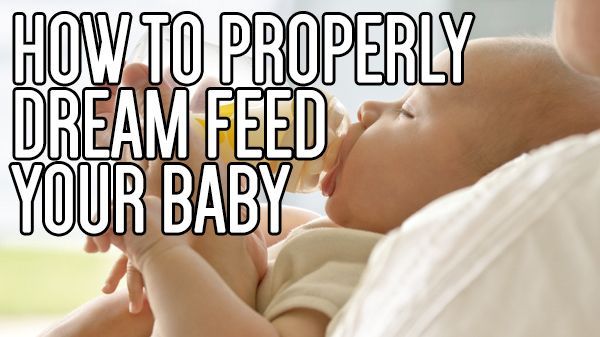 nine0036
nine0036 - At seven months, the frequency of application is about the same.
- At eight months, the feeding regimen changes. Since the baby shows high motor activity and is very busy exploring the surrounding space, in the daytime he forgets to breastfeed. In this regard, the number of daily feedings can be reduced to 6-8 times. The baby compensates for the reduction in daytime feedings by increasing the frequency and duration of nighttime feedings up to 6 times. nine0035 In the second half of the year, babies who stopped breastfeeding when waking up after daytime naps recall this habit again. The baby’s daytime sleep in the second half of life, as well as in the region of a year and older, looks something like this: the baby falls asleep sucking, sleeps quietly for a while, for example 1-1.5 hours, then starts tossing and turning, fiddling, worrying, at this moment the mother lies down next to , gives him a breast and the baby can fill up 10-15-30 minutes sucking. Mom may well use this time for her own rest - lie down, read, while the baby sleeps while sucking.
- Breastfeeding becomes more frequent at nine to ten months. In the daytime, this is 4-6 full feedings and about the same number of attachments for various reasons. The baby has new reasons for attachment. If, during active actions to master the world, the baby fills a bump or gets scared, he calms down with his mother's breast. There may be situations when you can comfort the baby by sitting next to him and hugging him. At night, 4-6 feedings remain, the baby begins to suckle more actively in the morning between 3 and 8 hours. nine0036
- At eleven months, a baby can already have 2-3 complete complementary foods. Initiation to adult food in the mind of a child is not associated with breastfeeding: attachment to the mother's breast is something other than the desire to get enough of the product they like. As a rule, after the baby has eaten, he feels the need to attach himself to the breast.
 The number of daily feedings remains the same in the child, but the number of short-term attachments increases. There are active mid-morning feedings between 4 and 8 o'clock in the morning. nine0036
The number of daily feedings remains the same in the child, but the number of short-term attachments increases. There are active mid-morning feedings between 4 and 8 o'clock in the morning. nine0036 - At ten or twelve months, the baby, if he is already walking, can sometimes breastfeed every time he comes to his mother, i.e. about every 15-30 minutes. Attachments around dreams and night sucking persist. Therefore, if a mother says that a child suckles once or twice a day, this means that there is no feeding at the request of the child. There are restrictions imposed by the mother, with which the baby has come to terms. He treats breast sucking like food, sucks on a pacifier or a finger to fall asleep or soothe, or falls asleep just like that, without calming down. nine0036
- At twelve months, the baby is applied in about the same way.
- At the age of one and a half years, there may already be one daytime nap, so there are fewer attachments associated with sleep. Preserved for morning sucking.
 The baby is very free with his mother's breasts. Sometimes it happens that he comes up to suck just for fun. For example, like this: he comes up, climbs on his knees, looks into his mother’s face, smiles, starts to swarm in his shirt, gets breasts, smiles at his breasts, sucks for 30 seconds and leaves. nine0036
The baby is very free with his mother's breasts. Sometimes it happens that he comes up to suck just for fun. For example, like this: he comes up, climbs on his knees, looks into his mother’s face, smiles, starts to swarm in his shirt, gets breasts, smiles at his breasts, sucks for 30 seconds and leaves. nine0036
 I know my mother, a lover of embroidery, who used this time specifically for embroidery ...
I know my mother, a lover of embroidery, who used this time specifically for embroidery ... As for the number of feedings per day when feeding a child on demand, their number is almost never less than 12. A newborn has 12 or more attachments, mostly they are all associated with dreams. And a child, say 1.5-2 years old, can also have about 12 attachments, only 3-4 are associated with sleep, and the rest are short-term attachments for various reasons. I suggest to all mothers reading this text - do not count the application, do not notice their duration. Breastfeed your baby as often as he asks, when you feel the need to. nine0004
Moms who don't think about breastfeeding without looking at the clock may get the impression that when breastfeeding on demand, the mother can do nothing but feed the baby.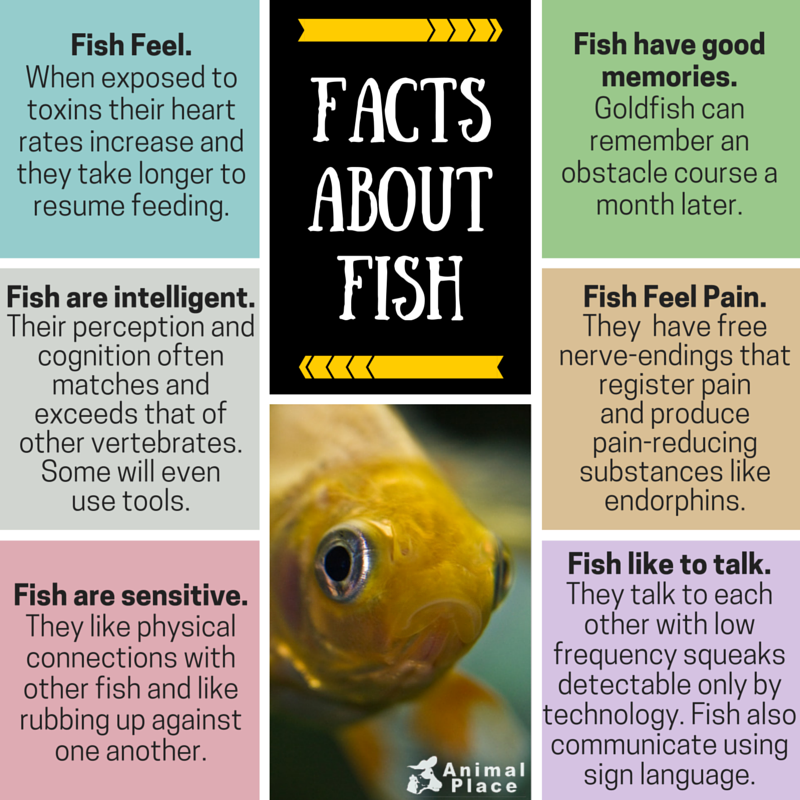 This is not true. After the birth of a baby, a mother begins another life, she is called life with a baby. That's all. The child is with the mother, not the mother with the child! Feel the difference! You need to be able to organize your life in a different way, in the first months, of course, the help of loved ones is very necessary. In the tradition of many peoples, it was customary for the first 40 days after childbirth to remove a woman from any housework and household chores, she was engaged only in a child. In some nations, objects that the mother of a newborn touched were considered “unclean”, therefore, they preferred to protect the mother from the rest of the household, allocating her a separate “corner” of the house, where no one bothered her and she did not interfere with anyone. Among the Slavs, such a restrictive custom was called a six-week. By 1.5-2 months, the rhythm of daytime dreams begins to form, and the baby has a kind of “regime”, the mother becomes more free. nine0004
This is not true. After the birth of a baby, a mother begins another life, she is called life with a baby. That's all. The child is with the mother, not the mother with the child! Feel the difference! You need to be able to organize your life in a different way, in the first months, of course, the help of loved ones is very necessary. In the tradition of many peoples, it was customary for the first 40 days after childbirth to remove a woman from any housework and household chores, she was engaged only in a child. In some nations, objects that the mother of a newborn touched were considered “unclean”, therefore, they preferred to protect the mother from the rest of the household, allocating her a separate “corner” of the house, where no one bothered her and she did not interfere with anyone. Among the Slavs, such a restrictive custom was called a six-week. By 1.5-2 months, the rhythm of daytime dreams begins to form, and the baby has a kind of “regime”, the mother becomes more free. nine0004
For a mother who can't imagine breastfeeding without looking back at the clock, and who is sure that the “right” baby is the baby lying quietly in her crib all the time, feeding on demand will be a complete hassle. It will be much easier for such a mother if she stops looking at the clock and ties the baby to herself with a large scarf or uses a patchwork holder (sling). It will become easier for her if she stops running between the nursery and the kitchen, but takes the baby with her to the kitchen and carries him around the house with her, doing housework, in a box, a cradle, a special chair, if she tries not to put him off often, and pick up as soon as possible, postponing the baby only in case of emergency and not for long. nine0004
It will be much easier for such a mother if she stops looking at the clock and ties the baby to herself with a large scarf or uses a patchwork holder (sling). It will become easier for her if she stops running between the nursery and the kitchen, but takes the baby with her to the kitchen and carries him around the house with her, doing housework, in a box, a cradle, a special chair, if she tries not to put him off often, and pick up as soon as possible, postponing the baby only in case of emergency and not for long. nine0004
Breastfeeding is not the same as house arrest. In the conditions of modern society, it is possible to organize the exit of a nursing mother to work from about 6 months of age of the baby. If necessary, you can start working from the age of 4 months, but, of course, it is better not every day of the week and not full time. It is the responsibility of a breastfeeding consultant to help a mother organize her return to work.
Sometimes when I advise mothers on breastfeeding, I suggest that they forget for a second that they are already living in the 21st century. I propose to return, for example, to the cave and ask what they will do if the child woke up at night, how to calm him down? If you are walking through the forest and trying not to attract the attention of predators, how to make the baby silent? If the child is thirsty, what will you give him? What is the baby used to, for thousands of years of its existence? To the fact that he sleeps on his mother while she wanders through the forest with a digging stick in search of roots, and wakes up when mother stops. Since mom stopped, then there is time to wake up and suck. Therefore, even now the child sleeps well, tied to the mother with a patchwork holder, wakes up when the mother, having done a few household chores, sits in a chair to take care of the baby. nine0004
I propose to return, for example, to the cave and ask what they will do if the child woke up at night, how to calm him down? If you are walking through the forest and trying not to attract the attention of predators, how to make the baby silent? If the child is thirsty, what will you give him? What is the baby used to, for thousands of years of its existence? To the fact that he sleeps on his mother while she wanders through the forest with a digging stick in search of roots, and wakes up when mother stops. Since mom stopped, then there is time to wake up and suck. Therefore, even now the child sleeps well, tied to the mother with a patchwork holder, wakes up when the mother, having done a few household chores, sits in a chair to take care of the baby. nine0004
Some mother, reading about the cave, will be offended, saying that she is a civilized creature. But please think. Man, mother's breast and mother's milk have been created by evolution over millions of years. They are made for each other. Baby food has created progress and more recently. The skills of motherhood and breastfeeding have also been lost by our society quite recently. A person is not physiologically adapted to artificial feeding and a pacifier. The mother's breast will not produce enough milk at 6-7 feedings per day. Nature did not know, when creating man as a mammal, that the time would come when the need for breastfeeding would be satisfied by some kind of pacifiers and nipples. nine0004
Baby food has created progress and more recently. The skills of motherhood and breastfeeding have also been lost by our society quite recently. A person is not physiologically adapted to artificial feeding and a pacifier. The mother's breast will not produce enough milk at 6-7 feedings per day. Nature did not know, when creating man as a mammal, that the time would come when the need for breastfeeding would be satisfied by some kind of pacifiers and nipples. nine0004
Changes that occur during the formation of the personality of a child who did not have full contact with the mother during prolonged breastfeeding are noted by modern research by psychologists and sociologists. These are changes with a minus sign. It would be better if they were not, these changes.
Breastfeeding is important not only for the baby, it is also important for the mother. During on-demand feeding, the woman's feelings change, a stronger attachment to the baby is formed, the woman becomes more sensitive to the needs of the baby. Deeper affection and understanding are not only preserved in infancy. They persist for life. For clarity, imagine what happens to a woman’s feelings if she tries to “withstand” a child, endures his crying, anxiety. What happens to a woman if she uses the recommendation from one very popular parenting book: "Go to the child if he cries for more than 15 minutes"? Speaking in abstract terms, humanity is interested in reviving the practice of breastfeeding. The revival of this practice is impossible without mothers realizing the true reasons for the child's need for attachment to the breast. nine0076
Deeper affection and understanding are not only preserved in infancy. They persist for life. For clarity, imagine what happens to a woman’s feelings if she tries to “withstand” a child, endures his crying, anxiety. What happens to a woman if she uses the recommendation from one very popular parenting book: "Go to the child if he cries for more than 15 minutes"? Speaking in abstract terms, humanity is interested in reviving the practice of breastfeeding. The revival of this practice is impossible without mothers realizing the true reasons for the child's need for attachment to the breast. nine0076
Lilia Kazakova, pediatrician,
leader of lactation and childcare counselors
Child hyperactivity | Children's City Hospital
There is a playground where my 4-year-old daughter and I go to play, one boy, Alyosha. He's 5. To say that he is very active is an understatement.
Just for the almost 2 years that we have been going there, I have never seen him calmly play in the sandbox, swing on a swing or just sit next to his mother for at least 2 minutes. This is a hurricane, a whirlwind, a tornado - such comparisons can be made. He doesn't walk, he runs. And always. Spinning, spinning, stumbling, falling, pushing, throwing, with anything, in the end, he is exhausted, and departs home with his mother in hysterics ...
This is a hurricane, a whirlwind, a tornado - such comparisons can be made. He doesn't walk, he runs. And always. Spinning, spinning, stumbling, falling, pushing, throwing, with anything, in the end, he is exhausted, and departs home with his mother in hysterics ...
When we see Alyosha on the playground, we try to wait for him to leave. Other mothers said among themselves that Alyosha had already been taken to a psychiatrist and diagnosed with hyperactivity...
What is attention deficit hyperactivity disorder?
There are generally two different options. This, in fact, is a painful condition in which the help of a specialist is necessary, and features of the character, temperament and upbringing of the child.
The disease is called Attention Deficit Hyperactivity Disorder (ADHD) and has distinct features:
- unable to maintain attention during the game and when performing tasks;
- often “does not hear” what they say to him, and has no hearing problems;
- does not finish what he started;
- often loses things that are needed every day - toys, school supplies;
- finds it difficult to do anything on his own; easily distracted;
- is forgetful in familiar everyday situations;
- constantly on the move, even while eating; nine0035 always does everything with noise; makes aimless movements;
- talks a lot; answers questions without hesitation;
- interferes with others, interferes with games and conversations;
- can't wait, stand in line.

If there are more than six of these signs and they are observed for six or more months in a row, it is highly likely that this is not a character and temperament, but a painful condition that requires the help of specialists.
In addition, children with ADHD simply cannot control themselves, cannot stop and calm down on their own, do not respond to prohibitions and remarks, are often impulsive and aggressive, do not finish anything, are quickly distracted and exhausted, speak quickly and a lot , ask millions of questions, but do not listen to the answers, are clumsy (dropping, breaking things), sleep poorly, they often have intestinal disorders and enuresis. nine0004
How to distinguish a simply active child from a hyperactive one
There is a simple way: if a child behaves the same EVERYWHERE - at home, at a party, on the street, in an unfamiliar environment, and in a children's team - this requires the help of specialists ( child neurologist, psychologist, psychiatrist). Consult, then either calm down and properly educate (more on this below), or confirm your doubts and be treated according to the recommendations of doctors.
Consult, then either calm down and properly educate (more on this below), or confirm your doubts and be treated according to the recommendations of doctors.
If a child is only noisy, restless and active at home, and sits “like a mouse” at a party, these are rather features of the character of such a child. This is exactly what happened to me with my child. The neurologist consulted, said that this is not a disease, but such a temperament; psychologist gave advice.
Why does this condition occur? Is it related to upbringing?
These are the questions that all parents worry about when a child is diagnosed. The number of children with ADHD, unfortunately, is growing every year. And now, according to various experts, they are from 3 to 10%. Boys among them are five times more than girls. nine0004
The causes of this condition are not fully known, but:
- environmental degradation;
- infectious diseases of the mother during pregnancy;
- abnormal delivery;
- birth injuries
. .. ... play an important role in the development of this condition.
.. ... play an important role in the development of this condition.
It is not connected with insufficiently tough upbringing (as some parents think, the child is not just “indulging” and “not obeying”), tougher penalties only worsen the situation with behavior. nine0004
“If you scold me and say that I am bad, then you will know how bad I can be!” - this is the result.
What is the main problem of children with ADHD and what to do about it?
The main problem is that such children cannot adapt to society. Due to their impulsiveness, uncontrolled aggression, such children ignore the generally accepted rules of behavior, harming themselves and others. Which inevitably leads to problems. With development, study, communication.
And one more thing. According to statistics, 80% of people who are in prison were hyperactive children. Think about it and do not delay treatment. It won't go away on its own!
How can parents help such a child?
Dealing with Hyperactivity in a Child I have a very active child myself. This, thank God, is just such a temperament, but it is also suitable for children diagnosed with ADHD. And the psychologist taught us how to properly handle it, in order to live a little more ourselves.
This, thank God, is just such a temperament, but it is also suitable for children diagnosed with ADHD. And the psychologist taught us how to properly handle it, in order to live a little more ourselves.
- Try to establish contact with the child before demanding anything from the child. Touch, hold hands.
- Look into his eyes and then talk to him. Why do it? Because when a child is busy with something, passionate, playing - he is all there, in his experiences, and does not hear you. It really helps - I take my daughter by the hand, look into her eyes, tell her what I need her to do, and in most cases it helps.
- Set permanent rules. Stick to it strictly. The rules for the child should be clear and simple. For example, if today you can’t eat sweets before meals, touch someone else’s dog, jump from a swing, be rude to your grandmother, open a gas valve, then tomorrow it’s impossible. nine0036
- It is important to follow the sequence of actions, break complex tasks into several simple ones - this will make it easier for the child to cope.
 How do I apply it? I say: “Let's clean the children's room. First we make the bed. To do this, we straighten the sheets, pillows, cover with a bedspread. Then we collect toys. Cars - in a box, dolls - on a doll table, cubes - in a box. And so on, until we remove everything.
How do I apply it? I say: “Let's clean the children's room. First we make the bed. To do this, we straighten the sheets, pillows, cover with a bedspread. Then we collect toys. Cars - in a box, dolls - on a doll table, cubes - in a box. And so on, until we remove everything. - Always observe the regime in everything. Literally by the hour, get up, eat, walk, go to bed. Always, any day of the week. It really helps. And adults too. nine0036
- Praise. But wisely. Something done well - praise. Listened - praise. Find something that your child is best at and praise for it. My daughter, for example, loves to help prepare her dad's breakfast. And literally melts with pleasure when I praise her for it. And the mood is good for half a day.
- Try to spend excess energy. Excess energy goes away - the child becomes calmer. Checked on myself. It is important not just to run, but to “put energy in the right direction” - dancing, acrobatics, athletics, swimming pool ...
- If you are going somewhere (travel, guests, shop), prepare in advance.
